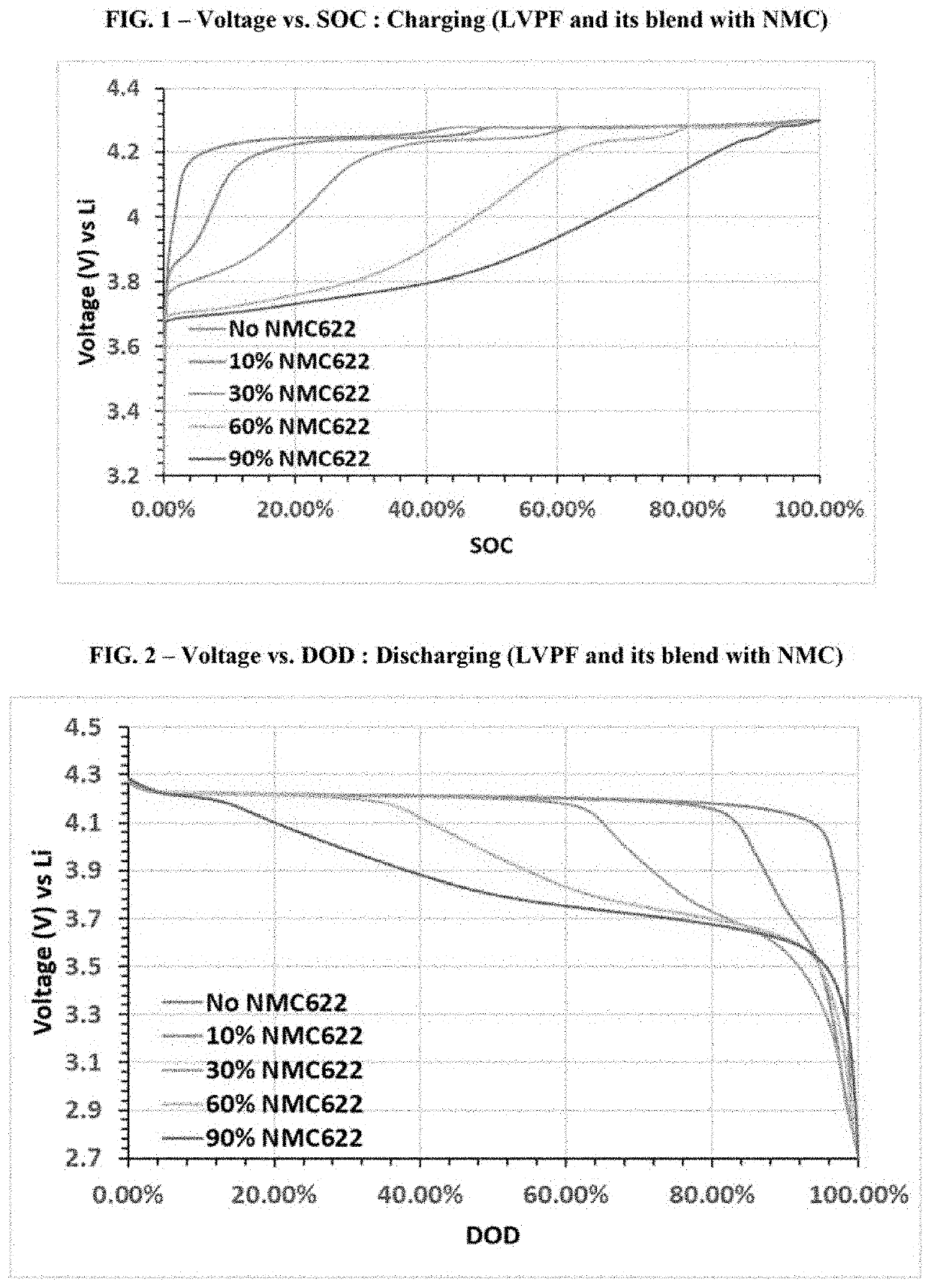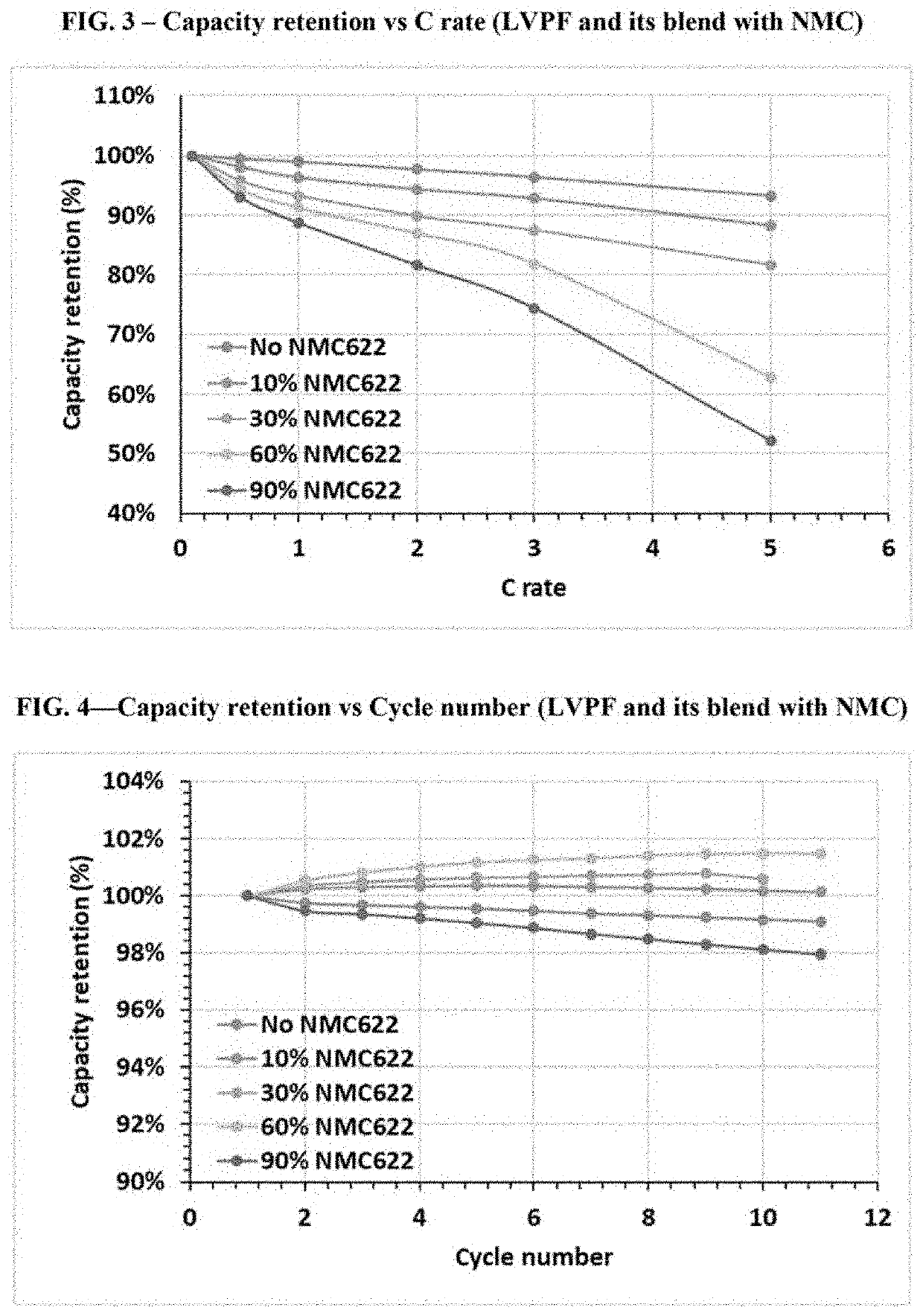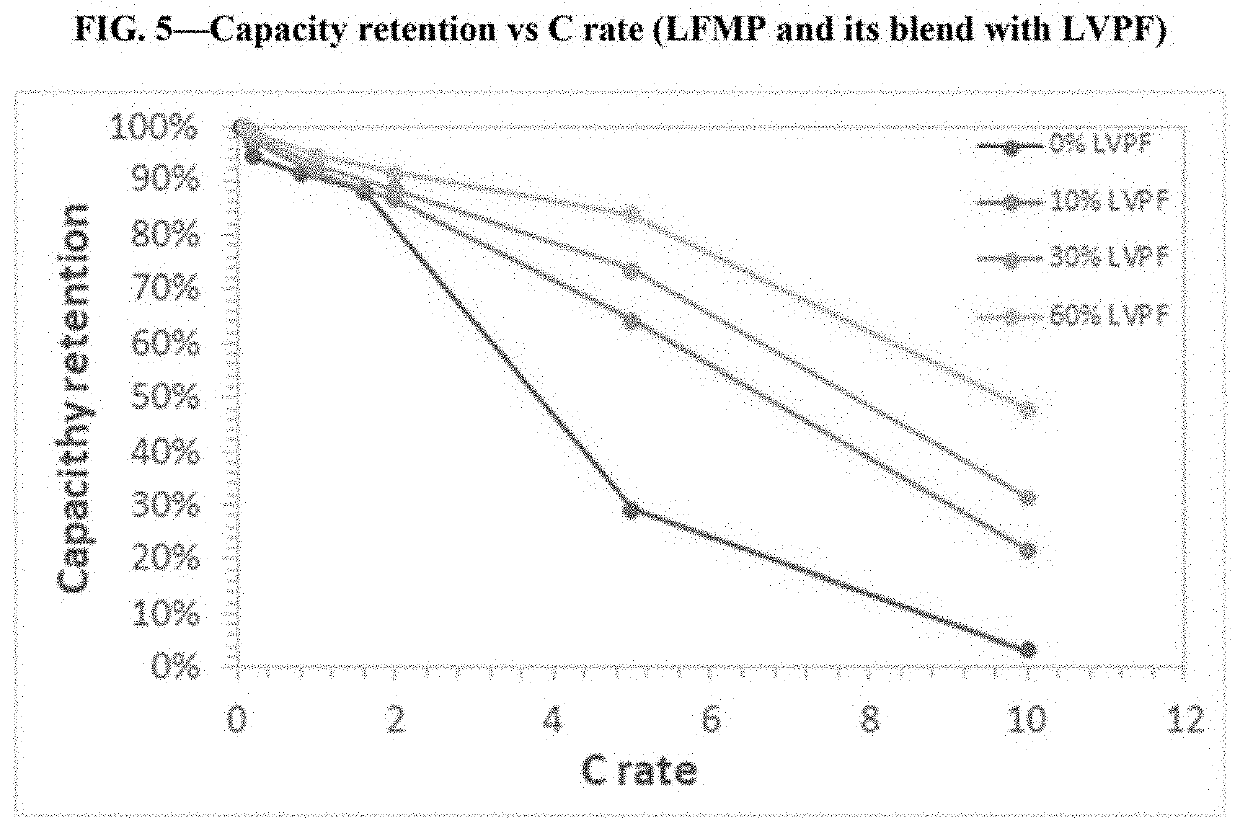Blended cathode materials for secondary batteries
a cathode material and secondary battery technology, applied in secondary cell servicing/maintenance, cell components, electrochemical generators, etc., can solve problems such as the inability to overcome embodiments, and achieve the effect of sacrificing energy density and improving safety
- Summary
- Abstract
- Description
- Claims
- Application Information
AI Technical Summary
Benefits of technology
Problems solved by technology
Method used
Image
Examples
example 1
[0153]In Example 1, single layer pouch cells were prepared having the following configuration. For each cell, the cathode was made by blending LVPF (LiVPO4F) as the first active material with NMC622 (LiNi0.6Mn0.2Co0.2O2) as the second active material in weight ratios of the first active material to the second active material (i.e., r:(1−r)) from 0.1:0.9 to 1:0 (i.e., weight ratios for the cells ranged from 10% LVPF to 100% LVPF); the anode was Li metal; and the electrolyte was 1M LiPF6 in an organic solvent blend of ethylene carbonate, ethyl methyl carbonate, and dimethyl carbonate in a volume ratio (EC / EMC / DMC) of 1:1:1. The configurations for the cells of Example 1 are summarized in Table 1 below.
TABLE 1ElectrolyteCathode MaterialSalt & SolventCell #(wt. ratio)Anode(vol. ratio)1ALVPFLi metal1M LiPF6EC / EMC / DMC (1:1:1)1BLVPF / NMC622 (0.9:0.1)Li metal1M LiPF6EC / EMC / DMC (1:1:1)1CLVPF / NMC622 (0.7:0.3)Li metal1M LiPF6EC / EMC / DMC (1:1:1)1DLVPF / NMC622 (0.4:0.6)Li metal1M LiPF6EC / EMC / DMC (1:...
example 2
[0162]In Example 2, single layer pouch cells were prepared having a configuration the same as Example 1, except that the second active material was LFMP (LiFe0.22Mn0.78PO4). The configurations for the cells are summarized Table 2 below.
TABLE 2ElectrolyteCathode MaterialSalt & SolventCell #(wt. ratio)Anode(vol. ratio)2ALFMPLi metal1M LiPF6EC / EMC / DMC (1:1:1)2BLVPF / LFMP (0.1:0.9)Li metal1M LiPF6EC / EMC / DMC (1:1:1)2CLVPF / LFMP (0.3:0.7)Li metal1M LiPF6EC / EMC / DMC (1:1:1)2DLVPF / LFMP (0.6:0.4)Li metal1M LiPF6EC / EMC / DMC (1:1:1)
[0163]The prepared cells were tested as follows.
[0164]Rate Capability
[0165]The prepared cells were tested for rate capability (retention (%) of specific capacity at different current (C)-rates). The results are shown in FIG. 5. As shown, LVPF significantly improved the rate capability of LFMP, particularly at higher C rates.
[0166]The addition of LVPF also improved the processability of LFMP, demonstrating that LVPF has excellent processability. For example, blending LVP...
PUM
| Property | Measurement | Unit |
|---|---|---|
| weight ratio | aaaaa | aaaaa |
| conductive | aaaaa | aaaaa |
| voltage | aaaaa | aaaaa |
Abstract
Description
Claims
Application Information
 Login to View More
Login to View More - R&D
- Intellectual Property
- Life Sciences
- Materials
- Tech Scout
- Unparalleled Data Quality
- Higher Quality Content
- 60% Fewer Hallucinations
Browse by: Latest US Patents, China's latest patents, Technical Efficacy Thesaurus, Application Domain, Technology Topic, Popular Technical Reports.
© 2025 PatSnap. All rights reserved.Legal|Privacy policy|Modern Slavery Act Transparency Statement|Sitemap|About US| Contact US: help@patsnap.com



